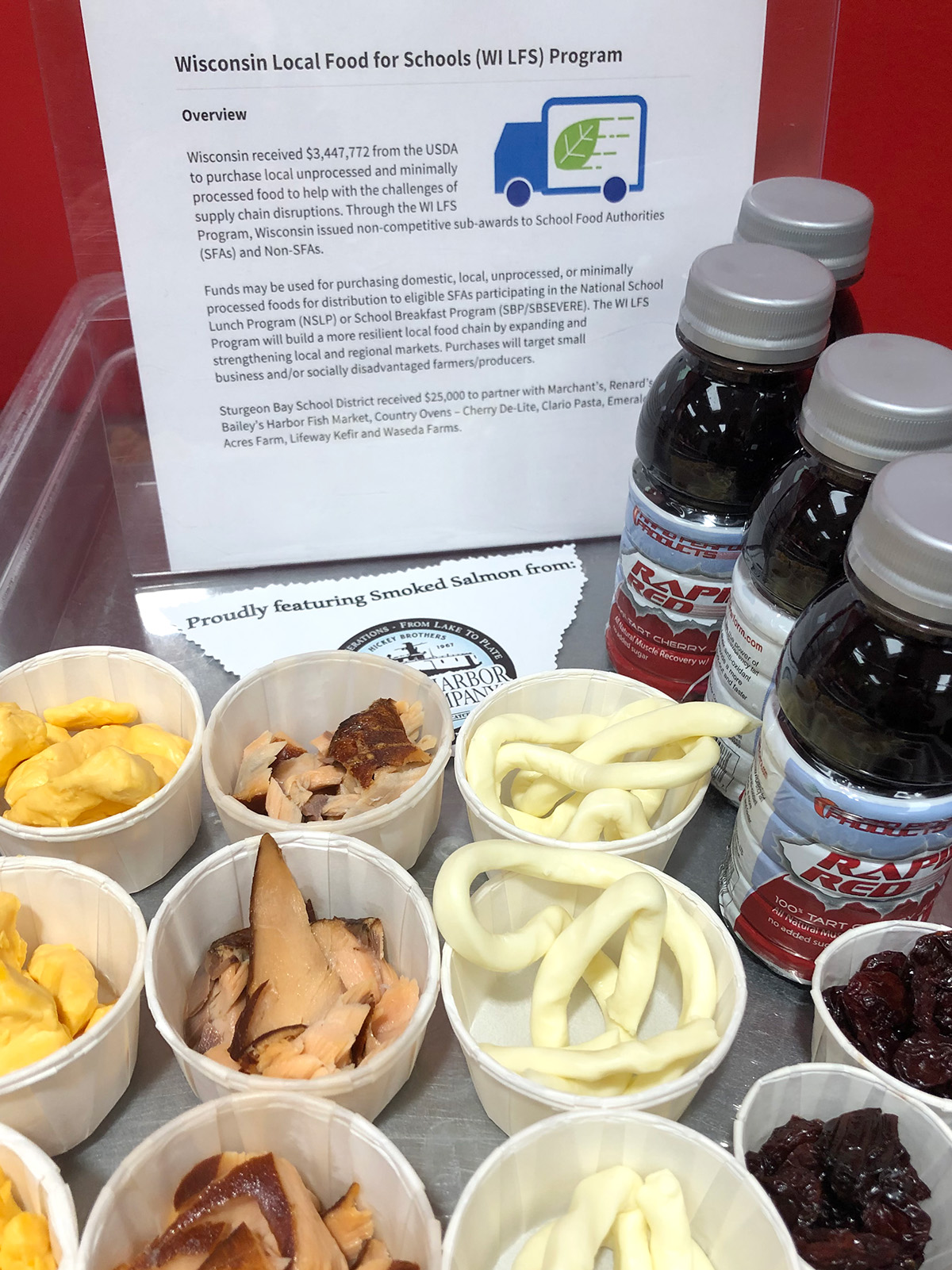USDA funding cuts to the Emergency Food Assistance Program, Local Food for Schools and Local Food Purchase Assistance programs mean less fresh, nutrient-dense food for children and local people who are experiencing food insecurity.
Neighbors and community members can help fill the gap and work together to strengthen Door County’s food systems, according to local experts.
Laura Apfelbeck from FoodWIse, a UW-Madison Extension program that helps educate people experiencing food insecurity how to prepare healthy foods and stretch their food budgets, suggested a few easy ways fellow community members can help get more fresh, healthy food to pantries and food banks:
- Plant a Row for the Hungry is an initiative where home gardeners do just that – plant an extra row of veggies or herbs in their gardens- and donate the harvest to a local food pantry. You can find a toolkit with detailed information here: https://www.doinggoodtogether.org/projects/plant-a-row
FoodWIse can connect you with a food pantry manager nearby to find out more about what foods they need. Contact FoodWIse Coordinator Laura Apfelbeck at [email protected]. - Gleaning is the act of collecting excess food from farms, gardens, farmers markets, grocers, restaurants or other sources and delivering it to food pantries or food banks. Door County does not have an organized gleaning program, but individuals can do it themselves. The USDA’s website has some tips to get started: https://www.usda.gov/sites/default/files/documents/usda_gleaning_toolkit.pdf
- Donate money to any of Door County’s food pantries or contact them to find out what produce and other nutrient-dense products are most needed: https://doorcountyknock.org/2023/10/food-resources-in-door-county-heres-what-to-know
- Support local farmers markets, farms, community supported agriculture programs, and initiatives like DC Farm for Vets’ educational programming. More information about some of these can be found at the following websites:
- https://www.dcfarmforvets.org/visit
- https://www.co.door.wi.gov/DocumentCenter/View/1682/Chapter-7-Agricultural-Resources
- Purchase some student lunches. According to Jennifer Spude, nutrition director at Sturgeon Bay schools, public school food programs are entirely federally funded, not paid for by local tax dollars. The federal government reimburses the food programs for free and reduced student lunches and students not eligible for those services must pay for their meals. Many families have school lunch accounts that are charged at the time of food service and paid later.
However, something many people might not know is that there are families who do not qualify for free or reduced lunch but still struggle to pay for meals, Spude said. Schools cannot legally turn away a student who cannot afford to pay for a meal, she said, so their accounts keep getting charged and building up debt that the families may be unable to pay down.
Contact information for local school and student food programs:
Door County YMCA: https://www.doorcountyymca.org/summer-foods-program
Sturgeon Bay School District: https://www.sturbay.k12.wi.us/departments/food-service.cfm
Southern Door School District: https://www.sdsd.k12.wi.us/district/services/food_service
Sevastopol School District: https://www.sevastopol.k12.wi.us/food_services
Gibraltar Area School District: https://www.gibraltar.k12.wi.us/page/pricing-ala-carte-and-offer-vs-serve

